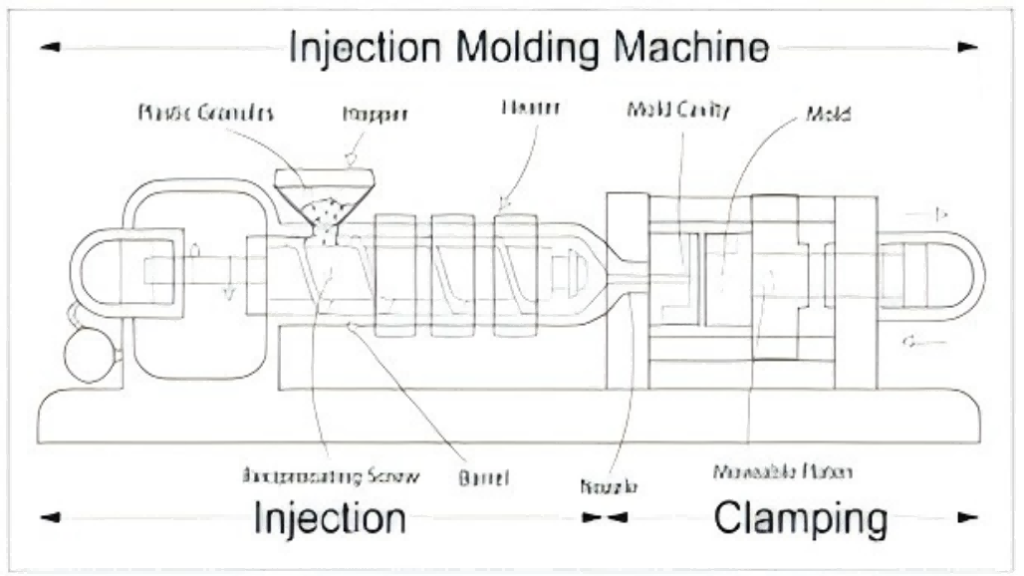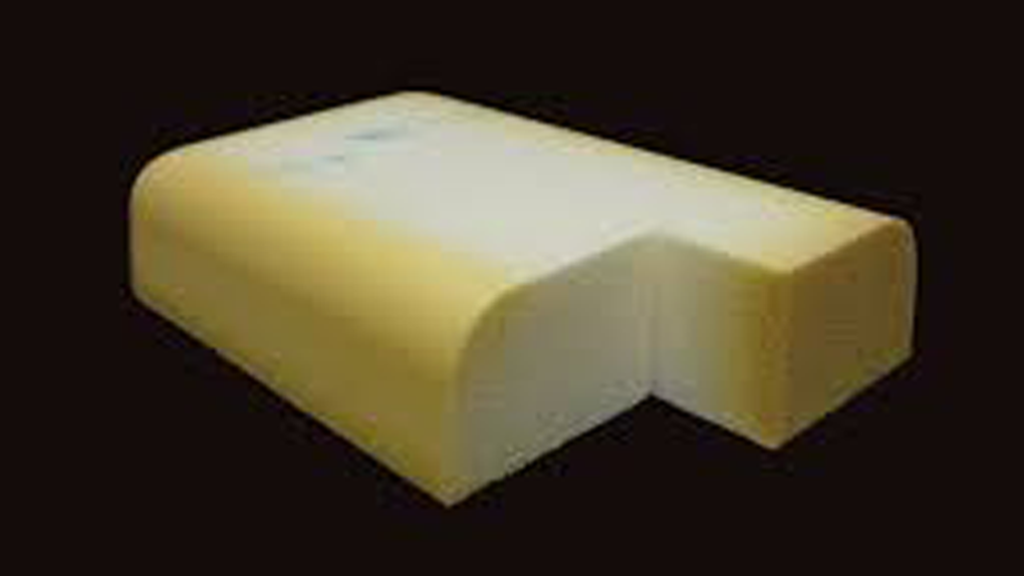In the modern industrial field, mold foam injection is a concept that is gaining increasing attention.
Mold foam injection is the process of injecting foam material into a mold to achieve the manufacture of a product of a specific shape.
This technology has a wide range of applications in many industries.
It not only enables the efficient production of complex-shaped products, but also reduces production costs to a certain extent.
What is Mold Foam Injection

Mold foam injection is a technology that injects foam material into a mold to achieve the manufacture of a specific shape of product.
Working Principle
First, the mold is designed according to the shape and size of the required product.
When ready for injection, the foam material is heated to a specific state to make it fluid.
For different foam materials, the heating method and temperature requirements will be different.
For example, for foamed plastics, it may be necessary to select a suitable heating method according to its type.
During the injection molding process, the foam material is injected into the mold with a certain pressure.
This process is similar to a syringe for injection.
With the help of the thrust of the screw (or plunger), the plasticized molten foam material is injected into the closed mold cavity.
Just like the working principle of the foam model, the product can be obtained after curing and shaping.
Take foamed plastic as an example, it has countless tiny pores inside.
Foaming is divided into two categories: physical foaming and chemical foaming.
Three main ways of physical foaming
first, dissolve the inert gas in the plastic melt or paste under pressure, and then release the gas after decompression, so as to form pores in the plastic and foam;
second, evaporate the low-boiling point liquid dissolved in the polymer melt to make it vaporize and foam;
third, add hollow balls to the plastic to form a foam body and foam, etc.
The chemical foaming method is to use chemical methods to generate gas to foam the plastic,
heat the chemical foaming agent added to the plastic to decompose and release gas to foam,
or use the gas released by the chemical reaction between the plastic components to foam.
Common types of mold foam
Polystyrene foam: the largest amount, the white pollution and disposable lunch boxes mentioned before are mostly this kind of foam.
It has the advantages of light weight, insulation, easy processing and low cost, and is mainly used in packaging, insulation, waterproofing and decoration.
However, its strength and durability are relatively low.

Polyurethane foam: There are many types of polyurethane foam, which can be divided into soft and hard types.
It has excellent thermal insulation, insulation, earthquake resistance and biocompatibility, and is widely used in the manufacture of soles, insulation pipes, car seats, etc.
The polyurethane foam molding process is relatively complex and requires strict control of parameters such as temperature and pressure.
But it is highly customizable and can adjust the formula according to different needs.

Rubber-based foam: For example, foam tape, most of which are EPDM and butyl rubber.
Polyethylene and polypropylene plastic foams.
In addition to the above common types of foam, there are many other materials that can be used for foam molding.
For example, polyvinyl chloride is a very flexible and easy-to-process material.
It is widely used in the manufacture of pipes, wire insulation, packaging materials, etc., but the price is relatively low and may contain harmful additives.
Foam molding requires higher temperatures and pressures.
Phenolic resin is a hard foam material with excellent properties such as fire resistance, high temperature resistance, and moisture resistance.
It is mainly used in the manufacture of electrical components, automotive parts and shipbuilding, etc.
However, the processing process is relatively complicated and requires the use of special foaming agents and curing agents.
Unsaturated polyester is a material with high strength, high heat resistance, insulation and other properties.
It is widely used, such as in the manufacture of fiberglass products, insulation materials, automotive parts, etc.
Foam molding needs to be achieved through chemical reactions such as initiators, and has high process requirements.
Expandable polystyrene is also a lightweight, heat-insulating, and easy-to-process material.
It is widely used in building insulation, packaging, ships and other fields, but the foam molding process requires the use of a blowing agent, which may have an impact on human health and the environment.
Application fields of mold foam injection

Application in industrial production, such as injection mold manufacturing, etc.
Mold foam injection has a wide range of applications in the field of injection mold manufacturing in industrial production.
For example, in the use of polyurethane foam injection machines, it can be used to manufacture products of various complex shapes.
Polyurethane foam has excellent thermal insulation, insulation, seismic resistance and biocompatibility, and is widely used in the manufacture of soles, insulation pipes, car seats, etc.
In the injection molding process, high-quality polyurethane foam products can be produced by precisely controlling parameters such as temperature and pressure.
In the production of EVA injection foam, it also plays an important role in the industrial field.
EVA injection foam can be used in many fields such as automobiles, medical care, construction and construction, textiles and sportswear, consumer goods, etc.
According to different product types, such as fillers, foam packaging, parts and components, gaskets, etc.
In automobile manufacturing, EVA injection foam can be used to manufacture automotive interior parts, seat pads, etc.
In the medical field, it is used to manufacture packaging for high-value medical equipment and instruments.
It’s can ensure that medical devices are not damaged during transportation and use, and also helps maintain cleanliness and hygiene.
Injection foaming technology can also be used to produce products with complex structures.
In the process of plastic injection molding, foaming agents are used to produce cellular structures, such as chemical foaming agents and physical foaming agents.
By adjusting the amount of foaming agent added, injection temperature, mold design and other key factors, the morphology and size of the pores can be controlled to achieve the production of products with different performance requirements.
For example, when producing high-precision instrument parts, the pore size can be reduced by optimizing the injection molding process parameters, and the dimensional accuracy and surface finish of the products can be improved.
In addition to the field of industrial production, mold foam injection also has potential applications in other fields.
In the manufacture of electronic products, foam molds are used to manufacture internal packaging for electronic products, such as protection for mobile phones, computers and electronic components.
Foam materials have good shock absorption and thermal insulation properties, which can effectively protect electronic products from damage during transportation and storage.
In the aerospace industry, foam molds are used to manufacture various parts of aircraft and spacecraft, such as sound insulation materials, insulation materials and seat pads.
These molds ensure the safety and performance of aircraft while providing lightweight solutions.
In the construction industry, foam molds are used to manufacture building materials such as precast concrete wall panels, decorative components, and roof insulation.
Foam molds can improve the production efficiency and quality of building materials, while having good thermal insulation properties to isolate temperature and humidity changes.
In the packaging and logistics fields, foam molds are widely used to package and protect a variety of goods, from household appliances to industrial equipment.
They can be customized to fit the shapes and sizes of various products, providing shock absorption and protection functions.
Discussion on the safety of mold foam injection

In the process of mold foam injection, there are some safety risks that need to be paid attention to.
First of all, in terms of material toxicity, different foam materials have different safety.
For example, the main raw material of foam plastic is polystyrene.
Pure polystyrene plastic foam is generally non-toxic, but if polystyrene plastic foam board is added with plastic additives, it may not be guaranteed to be non-toxic.
In addition, in the process of processing foam, if the foam is heated or burned, toxic gases will be released, and the processing process itself may also be polluted.
Like polyurethane foam, it is generally safer under normal circumstances, but if the foaming stock solution is improperly proportioned, it may also bring some potential risks.
In addition, chemical foaming agents release gases during thermal decomposition, and the decomposition products of different types of chemical foaming agents may also have an impact on human health.
For example, some endothermic chemical foaming agents release carbon dioxide and water when decomposed.
While exothermic chemical foaming agents release nitrogen.
The total yield and pressure of the gas released by the exothermic foaming agent are usually high, which may bring certain safety hazards.
To reduce the safety risks during mold foam injection, the following measures can be taken.
In terms of operation methods, the proportion of foaming agent added should be strictly controlled.
Generally, the proportion of foaming agent added is 0.3~0.5%, depending on the degree of foaming required by injection molding or the surface condition of the product after foaming.
The setting of the barrel temperature of the injection molding machine should be parabolic, that is, high in the middle and low at both ends.
The temperature of the screw feeding section is set low, the temperature of the compression section is set high.
The temperature of the metering section is lower than the compression section, and the nozzle temperature is as low as possible to just eject the glue.
The injection speed is as fast as possible without causing defects in the product. It is usually divided into two sections of shooting speed.
The first section is as fast as possible, and the second section can be slower, so that the air in the mold has enough time to be discharged.
In foam injection molding, you can use no pressure holding or a relatively small pressure holding.
For possible problems such as leaking, swelling, cavitation, non-stickiness, uneven mixing, etc., corresponding solutions should be taken according to the specific situation.
Such as adjusting the foaming plug and the outer barrel foaming silicone ring, adjusting the foaming amount and the stock liquid ratio, changing the position of the injection hole or adding injection points.
Cleaning the oil with alcohol, increasing the injection pressure, filtering the stock liquid and increasing the stock liquid temperature, etc.
In terms of safety protection measures, operators must wear safety labor protection equipment correctly, and are not allowed to operate without protective measures.
They must strictly abide by the operating procedures, and are strictly prohibited from illegal operations and illegal commands.
Only qualified operators are allowed to operate the equipment. The machine can only be started after confirming that all personnel around the foaming machine are in a safe position and the equipment is normal.
Before starting the machine, the exhaust and detoxification device should be turned on.
You must concentrate on your work and must not leave the machine without authorization.
The equipment operation control panel is managed by the operator, and non-designated personnel are strictly prohibited from operating buttons to avoid accidents.
When cleaning, maintaining, and overhauling the machine, you must first turn off the power and stop the machine, support the mold and workbench with reliable objects
Hang a “Someone is working, no operation” warning sign on the control panel before operating.
The control panel must be supervised by someone. Use the detoxification device correctly and maintain it regularly to keep it in good working condition.
If the safety device of the foaming machine has failed or failed, it is strictly forbidden to enter the machine or continue to use it.
The maintenance personnel should be notified in time for maintenance.
After the work is completed, keep records, carefully clean the cavity and oven of the pre-foaming machine, remove the residual beads
Cover the barrel, put it back into the material storage room, clean the site, and turn off the electrical appliances and wind source switches.
When making foam molds, in order to reduce the potential impact on physical health, you should ensure that the workplace has a good ventilation system to promptly remove harmful gases and particulate matter in the room.
Workers should wear appropriate personal protective equipment, such as masks, gloves and work clothes, to reduce exposure to harmful substances.
Regularly check and maintain the equipment of the foam mold to ensure its normal operation and avoid the generation of additional harmful substances.
Follow the operating procedures and properly operate and handle foam molds to minimize potential health risks.
For molding and extrusion using chemical foaming agents, care should be taken to select the appropriate foaming agent and polymer
Avoid large pressure drops before the die lip or die, and ensure uniform expansion of the foam.
Use a “bell-shaped” temperature profile for chemical foaming
the first temperature zone after the feed throat is set as cool as possible to reduce the chance of pre-foaming and gas escaping the feed throat.
The temperature should peak in the subsequent zone to allow good melting of the polymer and complete decomposition of the selected foaming agent.
Finally, reducing the temperature of the machine’s mold or nozzle can increase melt strength, thereby preventing foam collapse.
In injection molding applications, the ideal molding press should have a shut-off nozzle to prevent drooling between shots.
The location of the gate and runner should allow for rapid and uniform filling, short flow lengths should be used when possible, and good venting should be guaranteed.
Shimming the mold is a reliable method to determine the depth and location of the vent hole.
Conclusion
The wide application of mold foam injection technology in industrial production and multiple fields has fully proved its feasibility.
From a technical point of view, by precisely controlling parameters such as temperature and pressure,
efficient injection molding of different foam materials can be achieved to produce products of various complex shapes.
Whether it is polyurethane foam, polystyrene foam or other types of foam materials, they can meet the needs of different industries under specific process conditions.
For example, mold foam injection technology has played an important role in automobile manufacturing,
electronic product manufacturing, aerospace industry, construction industry, packaging and logistics.
It has good thermal insulation, insulation, seismic resistance and other properties,
providing more possibilities for product manufacturing in various industries
Although there are certain safety risks in the application of mold foam injection technology, such as material toxicity,
these risks can be effectively reduced by taking correct operating methods and safety protection measures.
In terms of operation methods, strictly controlling the addition ratio of the foaming agent, reasonably setting the temperature of the injection molding machine barrel,
optimizing the injection speed and pressure holding parameters can improve the stability of the production process and reduce possible problems such as leakage, foaming, and cavitation.
In terms of safety protection measures, operators can ensure the personal safety of operators by correctly wearing safety labor protection products,
complying with operating procedures, and ensuring the safety of personnel around the equipment.
In addition, for the process of making foam molds, a good ventilation system, wearing personal protective equipment,
and regular inspection and maintenance of equipment can reduce potential effects on health.
When using chemical foaming agents for molding and extrusion, selecting appropriate foaming agents and polymers, adopting reasonable temperature curves,
and optimizing mold design can ensure uniform expansion of the foam, improve product quality, and reduce safety risks.
